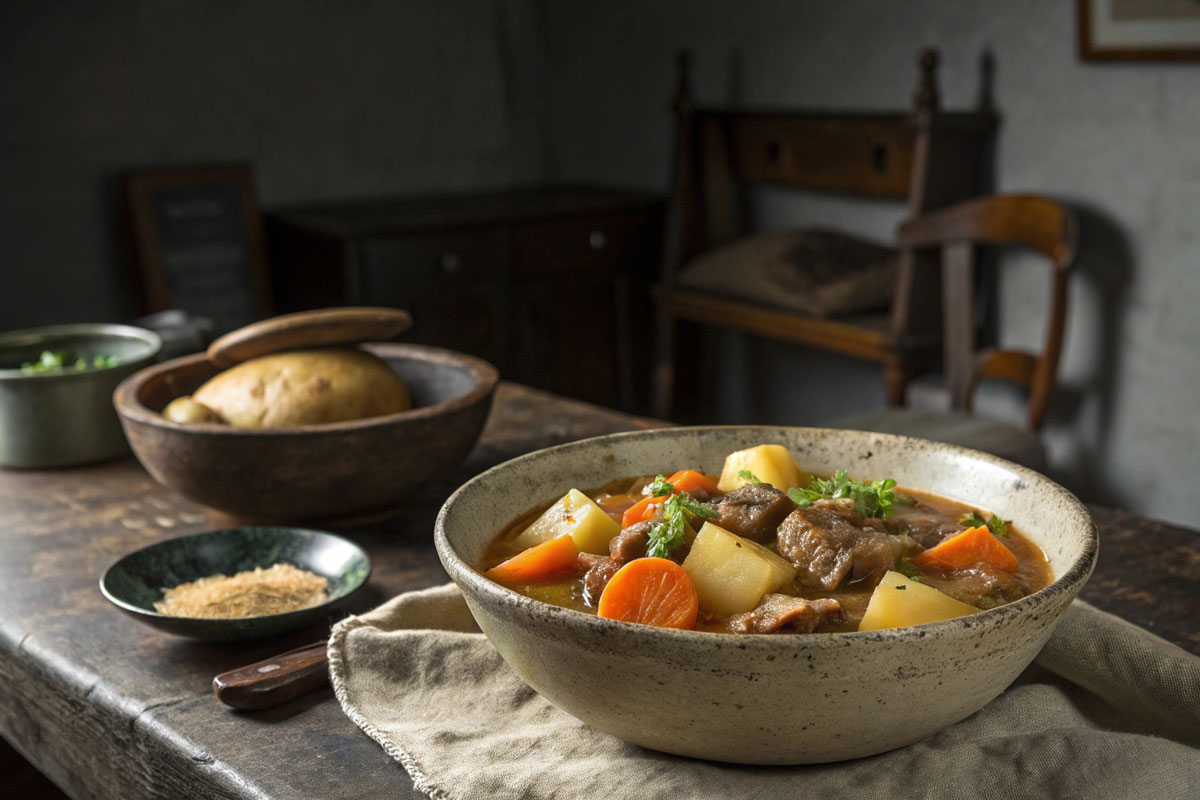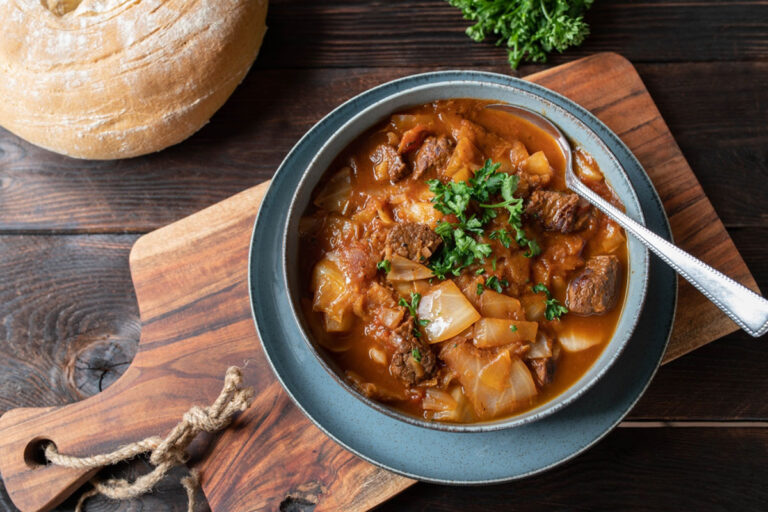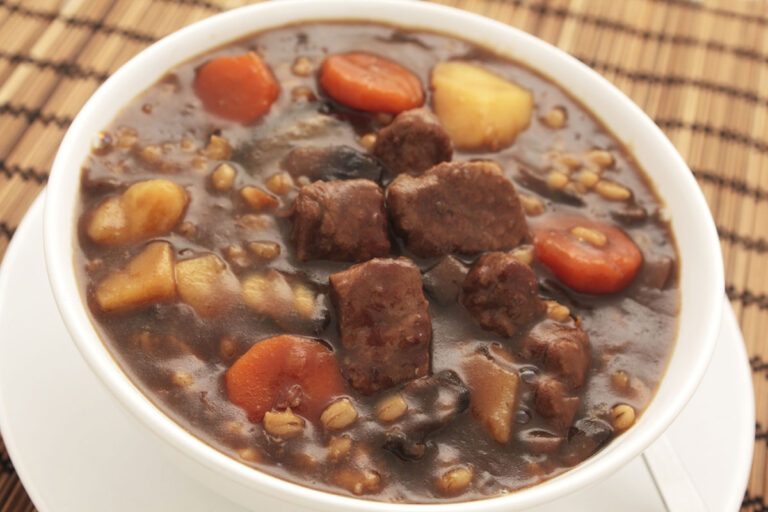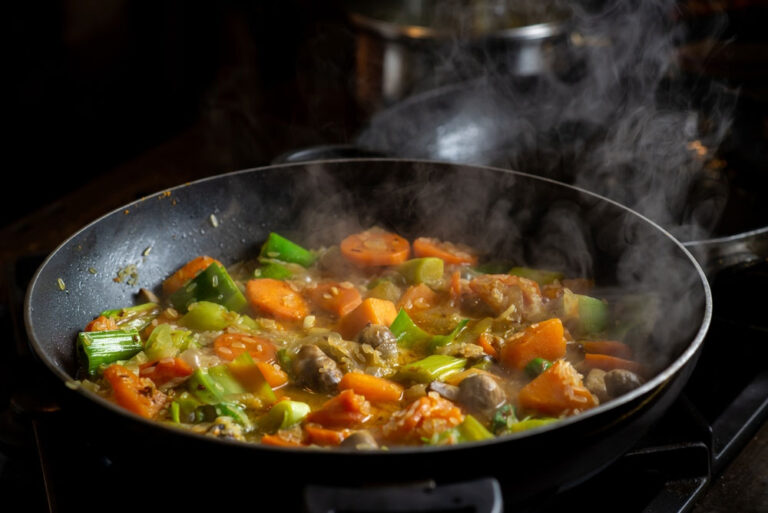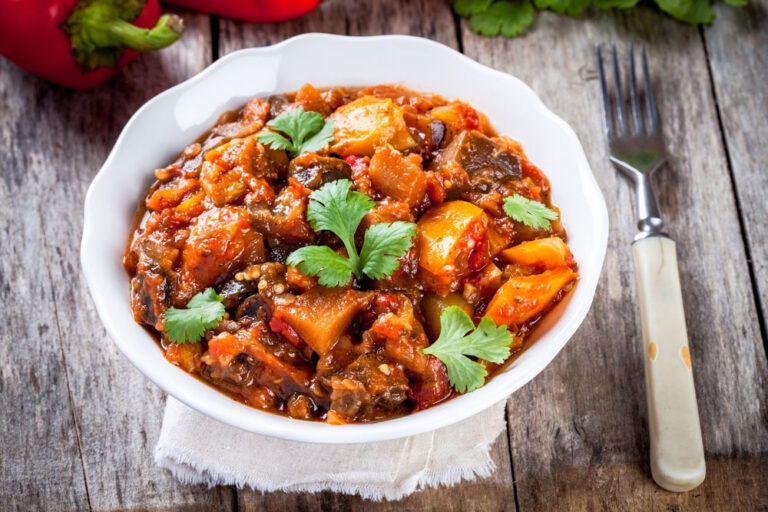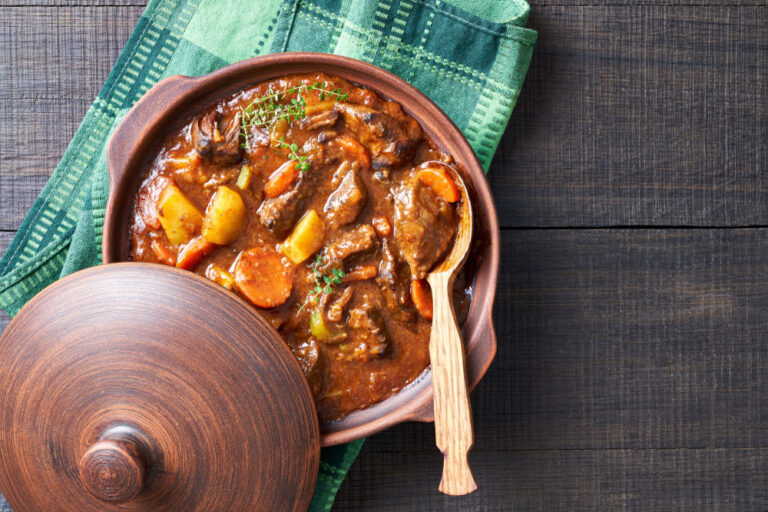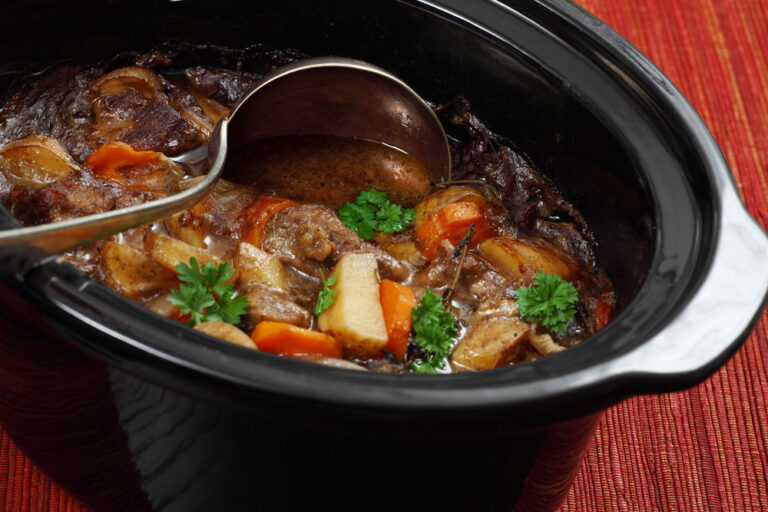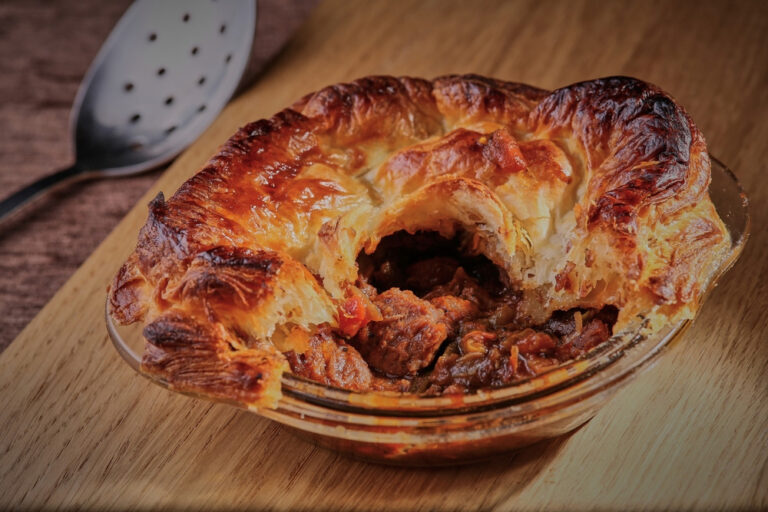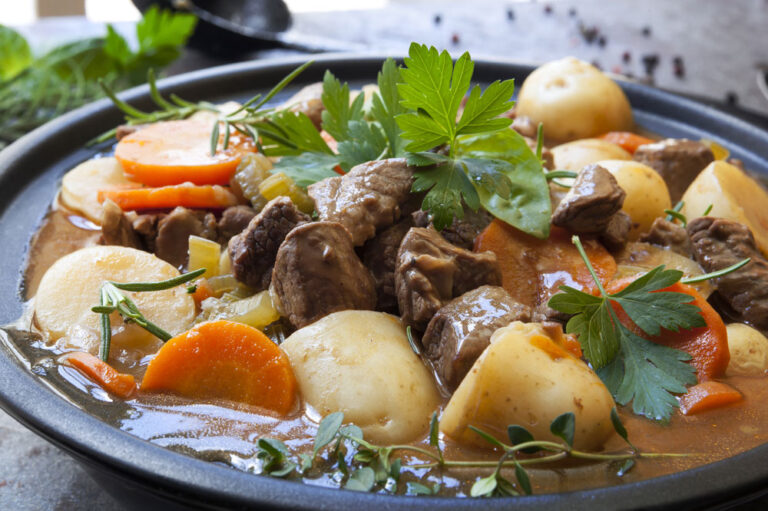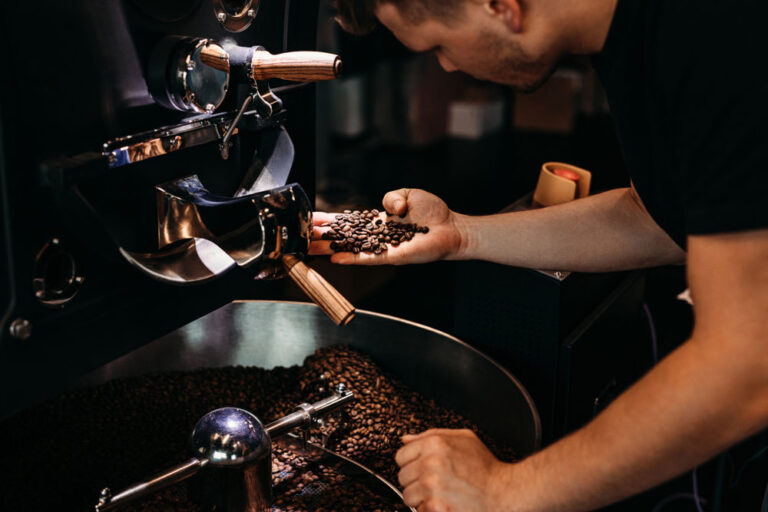The Roots Beneath the Boil – Ireland Before the Stew
To understand the origin of Irish stew, one must first understand Ireland itself—its ancient rhythms, its people, and the land that shaped their sustenance. Long before the stew took form in the bubbling cauldrons of rural hearths, Ireland’s culinary identity was shaped by its agrarian society, climate, and the rugged terrain that demanded practicality and thrift.
In early Gaelic Ireland, food was less about refinement and more about survival. For centuries, the staples of the Irish diet consisted primarily of dairy, grains, and whatever meats could be hunted, trapped, or raised locally. Pork and wild game like venison and boar were prized, but not always reliably available. Cattle were symbols of wealth and status, rarely slaughtered for food except during feasts or times of hardship.
The arrival of the potato in the late 16th century revolutionized Irish agriculture and, in time, its cuisine. Potatoes thrived in Irish soil and soon became the cornerstone of rural diets. But before the potato became dominant, Irish cooking relied on native root vegetables and grain-based porridges. Boiling, rather than baking or roasting, was the dominant cooking method—fitting for a society where most homes had a cauldron hanging over a fire.
Into this cultural and culinary setting would eventually arrive the elements that defined Irish stew: meat, root vegetables, and a simmering pot. But before it became the national dish of a people, it was merely an idea—waiting for the right ingredients and the right moment in Irish history.
From Cauldron to Classic – The Birth of a Dish
By the 17th and 18th centuries, Ireland was a nation in transition. The widespread cultivation of the potato, now deeply entrenched in the rural diet, transformed how people ate across the island. Meanwhile, mutton and lamb, byproducts of sheep raised for wool, became a common source of meat, particularly among poorer farming families. This convergence of ingredients — meat, potatoes, onions, and eventually carrots — laid the foundation for what would become known as Irish stew.
The stew’s rise was not born out of culinary invention but necessity. Most Irish households had limited access to expensive cooking fuel or elaborate equipment. The one-pot meal became a staple not just because it was easy, but because it was practical — a slow-simmered pot that could feed an entire family using what was at hand. Lamb or mutton bones added depth of flavor; potatoes provided bulk and nourishment. The result was deeply satisfying, sustaining food.
Early Irish stew was far from the refined versions we see today. It was rustic, often boiled over an open fire in a bastible(a type of cast-iron pot), and adapted to whatever vegetables and meat were seasonally available. Some regional variations used goat meat or even beef. Others left out carrots entirely, focusing purely on the basics: meat, onion, and potato — nothing more, nothing less.
This was a dish born of economic struggle, of resourcefulness, and of rural ingenuity. It reflected the soul of the Irish countryside — humble, hearty, and unpretentious. And while it was common, even modest, Irish stew began to take on a role that transcended mere sustenance: it became a symbol of identity, community, and survival.
Famine, Emigration, and the Stew Abroad
As the 19th century dawned, Ireland faced some of the darkest chapters in its history. The Great Famine(1845–1852) devastated the population and reshaped not just the island’s agricultural landscape but also its cuisine. The failure of the potato crop — a crop central to Irish stew — led to mass starvation, death, and the emigration of over a million Irish people. In this period of upheaval, the humble stew underwent a transformation.
Many of those who fled Ireland carried the memory of Irish stew with them. It was no longer just a dish; it became a culinary connection to home. In countries like the United States, Canada, and Australia, Irish immigrants tried to recreate the meals of their homeland using new, local ingredients. Lamb might be swapped for beef or pork; unfamiliar vegetables like turnips or parsnips might be added. Despite these changes, the heart of the stew remained — meat, vegetables, and a slow simmered soulfulness.
As Irish communities grew abroad, so did the stew’s visibility. In Irish-American neighborhoods, especially around St. Patrick’s Day, Irish stew became more than a daily meal — it became a celebration of heritage. It was served in pubs, on family tables, and eventually in cookbooks, where it was stylized for broader appeal.
Meanwhile, back in Ireland, stew remained a staple. Even as the country modernized and new culinary influences arrived, Irish stew held firm — not out of resistance to change, but because of its deep cultural roots. It was an emblem of survival, of the perseverance of Irish culture through hardship, and of the enduring power of tradition.
Evolution in the Modern Kitchen
As Ireland moved into the 20th and 21st centuries, Irish stew began to evolve beyond its traditional boundaries — not by abandoning its essence, but by adapting to a modern, globalized world. Once a dish of necessity, it gradually became a symbol of culinary identity, open to reinterpretation by home cooks, chefs, and food historians alike.
The classic ingredients — lamb or mutton, potatoes, onions, and sometimes carrots — remained central to most recipes. However, the stew increasingly appeared with gourmet twists: slow-cooked with red wine reductions, enhanced with fresh herbs like rosemary and thyme, or even deconstructed in fine-dining settings. In some contemporary versions, vegetarian and vegan Irish stews emerged, substituting lentils, root vegetables, and plant-based proteins, in keeping with global dietary shifts.
Television chefs and Irish food personalities played a key role in elevating the dish’s profile, both at home and abroad. What was once a rustic meal for farmers became a centerpiece of modern Irish cuisine, celebrated for its authenticity and versatility. At food festivals and heritage events, Irish stew is often featured not just as a dish to be consumed, but as a story to be told — about place, people, and tradition.
Importantly, the rise of the farm-to-table movement helped reconnect Irish stew to its agrarian roots. Locally sourced lamb, organic root vegetables, and artisanal broths gave new life to the dish, bringing it full circle. It is no longer just about feeding a family — it’s about telling a story through food: a story of resilience, simplicity, and cultural pride.
At its heart, Irish stew remains a comfort food, but now it’s also a conversation starter — about heritage, sustainability, and the ongoing reinvention of Irish identity through the meals we cherish.
Irish Stew as Cultural Symbol
Today, Irish stew stands as more than just a national dish — it’s a living cultural emblem, deeply woven into the Irish identity both at home and abroad. Its enduring presence on dinner tables, in pubs, and at festivals speaks to its unifying power: a meal that connects generations, regions, and even the Irish diaspora across the globe.
In many ways, the stew has become a symbol of Ireland’s history — a quiet testament to the struggles and resilience of its people. During times of hardship, such as the Great Famine and economic depression, it embodied survival through simplicity. In periods of revival, it has served as a proud reminder of culinary heritage. Whether it’s simmering on a farmhouse stove in rural Kerry or served in an upscale restaurant in Dublin, it carries with it the spirit of Irish ingenuity and warmth.
Beyond its borders, Irish stew acts as an ambassador of Irish culture. On St. Patrick’s Day, it’s often featured in celebratory meals from Boston to Sydney, reminding Irish descendants and admirers of their shared roots. It appears in cookbooks, travel writing, and food television as shorthand for something deeper — authenticity, tradition, and home.
In recent years, chefs and food writers have continued to explore what Irish stew can be. Some see it as a canvas for innovation, while others guard its traditional form with pride. But nearly all agree: Irish stew is not just a recipe — it’s an evolving story.
As Ireland continues to blend the old with the new, Irish stew remains a touchstone, both humble and profound. It’s a bowl of memory and meaning, filled not just with meat and vegetables, but with the flavor of a people’s journey — from hardship to pride, from tradition to modernity. In the end, the origin of Irish stew isn’t just about where it came from, but how it continues to nourish the soul of a nation.
BEEF AND CABBAGE STEW
Description: Beef and Cabbage Stew is a hearty, comforting dish...
View Recipe...IRISH BEEF AND BARLEY STEW
Description: This hearty Irish Beef and Barley Stew is a...
View Recipe...VEGETARIAN GUINNESS STEW
Description: A hearty and rich stew packed with vegetables, simmered...
View Recipe...VEGETARIAN IRISH STEW
Description: Vegetarian Irish Stew is a hearty and flavorful stew...
View Recipe...BALLYMALOE IRISH STEW
Description: Ballymaloe Irish Stew is a delicious variation of the...
View Recipe...GUINNESS STEW
Description: A hearty beef stew made with Guinness beer, vegetables,...
View Recipe...IRISH STEW PIE
Description: A twist on the classic Irish stew, baked in...
View Recipe...IRISH STEW
Description: A hearty and comforting stew made with lamb, potatoes,...
View Recipe...



